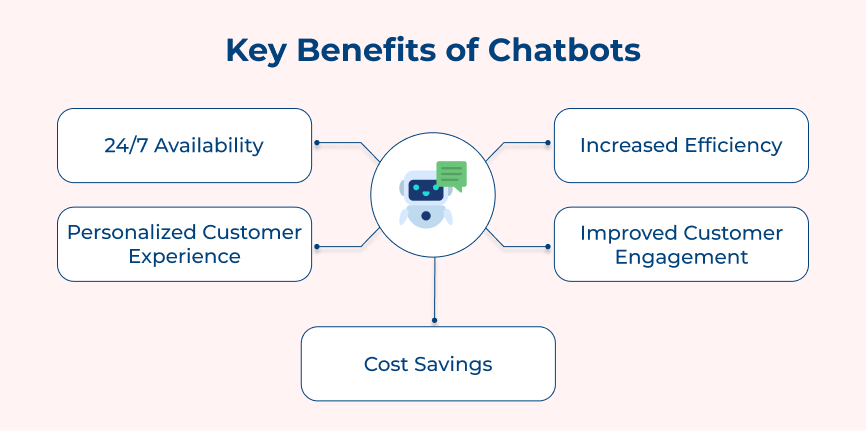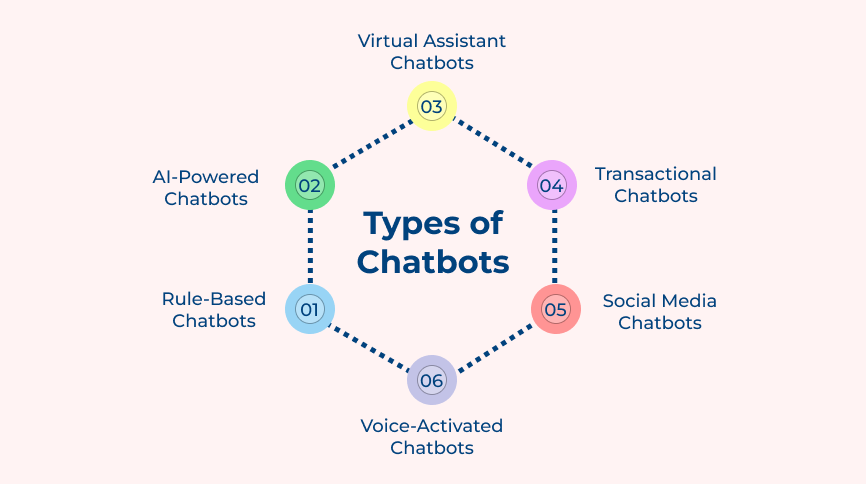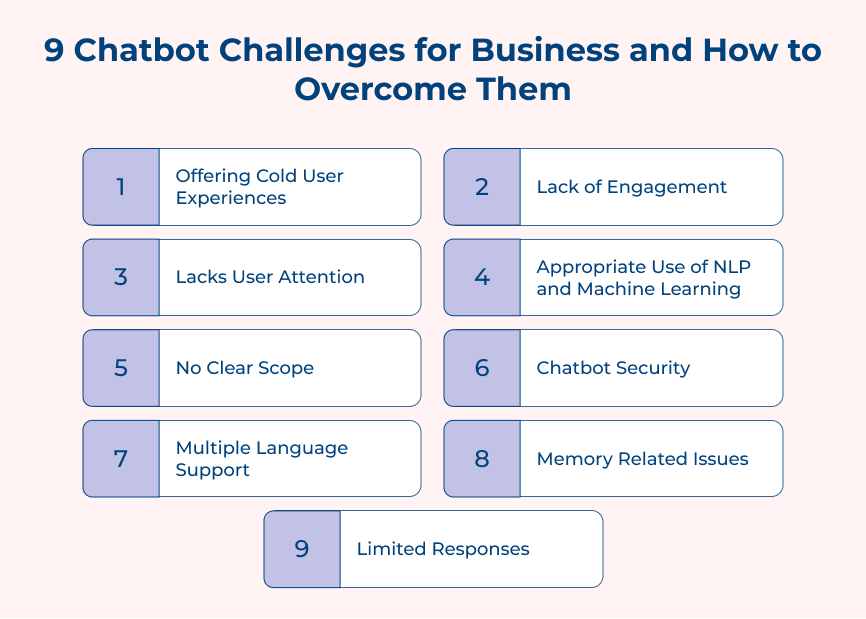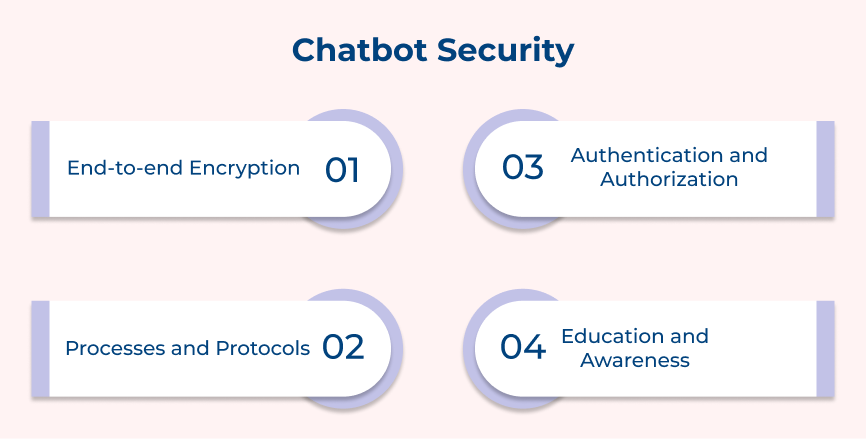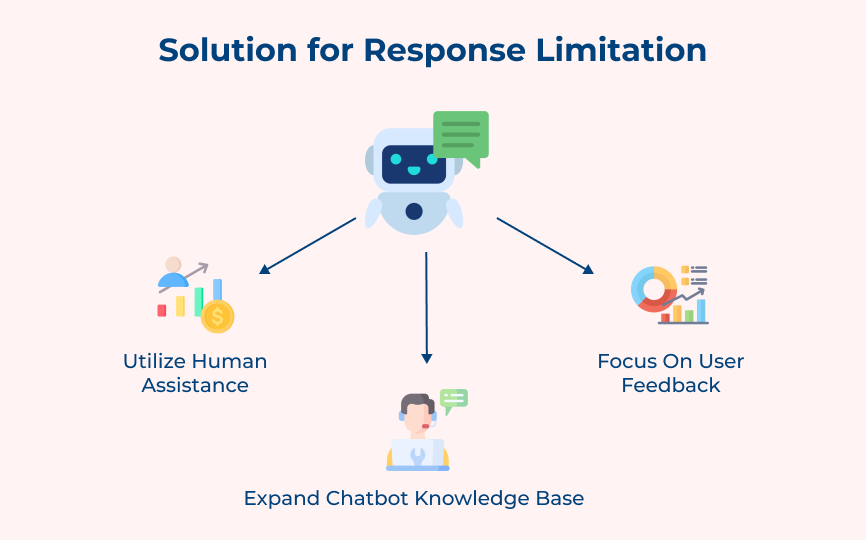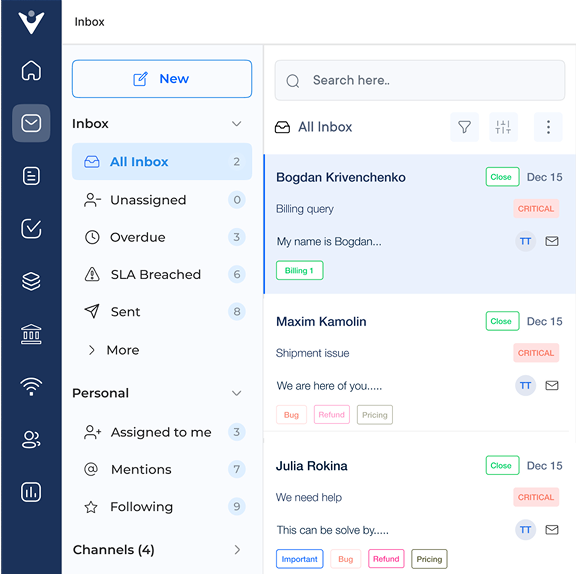Challenge 1: Offering Cold User Experiences
When users interact with chatbots, they expect a personalized and human-like experience. Many chatbots fail to provide the warmth and personal touch that users desire. It can lead to frustration and dissatisfaction, eventually impacting customer loyalty.
Businesses must try their best to overcome such chatbot challenges because a cold user experience can create a negative impression of the brand and hinder the overall customer experience. Customers may become disengaged and seek alternative channels for support, resulting in lost opportunities for businesses.
Solution:
- Incorporate natural language processing (NLP): Chatbots can better understand user queries and respond more conversationally. It allows for a more personalized and human-like experience, enhancing user satisfaction.
- Implement personalization: Tailoring responses and suggestions based on individual customer data, allows chatbots to provide a more personalized experience.
- Introduce live agent handoff: Chatbots may not be able to adequately address complex queries or emotionally sensitive issues. Implementing a mechanism for seamless handoff to a live agent ensures that user experiences do not remain cold and detached.
Challenge 2: Lack of Engagement
When it comes to utilizing chatbots for business, one of the major challenges that companies often face is the lack of engagement from customers. Despite the advancements in artificial intelligence and natural language processing, many chatbots still struggle to provide interactive conversations. The lack of engagement can lead to frustration for both customers and businesses alike.
Overcoming the chatbot challenge of lack of engagement is crucial for the success of chatbot implementation. A chatbot is meant to serve as a helpful, conversational tool that enhances the customer experience. If customers feel disengaged or unable to connect with the chatbot, they are likely to abandon the conversation. It leads to lost opportunities for business growth and customer satisfaction.
Solution:
- Improve contextual understanding: Investing in advanced natural language processing algorithms and training the chatbot with comprehensive data sets can significantly enhance its ability to provide relevant responses.
- Personalize the experience: Tailoring the chatbot’s responses and recommendations to each customer’s preferences can make interactions feel more customized.
- Constant improvement and feedback loop: Regularly monitoring and analyzing customer interactions with the chatbot can help identify areas for improvement.
Challenge 3: Lacks User Attention
Where attention spans are increasingly shorter, one of the major chatbot challenges faced by businesses utilizing chatbots is the lack of user attention. Even though chatbots are efficient and capable of providing quick solutions, they can often struggle to command the undivided attention of users.
Without retaining user attention, chatbots may fail to effectively communicate and engage with customers. It can result in missed opportunities and decreased customer satisfaction. Businesses must focus on overcoming such challenges and ensure that their chatbots can hold user attention to achieve desired outcomes.
Solution:
- Personalization: Tailoring chatbot interactions to individual users can significantly enhance user engagement. Businesses can create personalized experiences that resonate with users by analyzing user data and utilizing machine learning algorithms.
- Interactive and engaging conversations: Design chatbots with conversational styles that mimic human interactions. Utilize interactive elements, such as emojis, images and videos, to keep users engaged.
- Clear and concise communication: Users often lose interest when chatbot responses become lengthy and convoluted. Break down complex messages into bite-sized, easily digestible chunks to ensure users remain engaged throughout the conversation.
Challenge 4: Appropriate Use of NLP and Machine Learning
Organizations are faced with the chatbot challenges of ensuring the appropriate use of natural language processing (NLP) and machine learning. It refers to the ability of chatbots to understand and respond accurately to user queries. Implementing a system that allows seamless transfer of conversations to human agents ensures that users receive the assistance they need and maintains a high level of customer satisfaction
Businesses have to overcome the challenges if they want to provide a seamless and satisfactory experience for users interacting with chatbots. Inaccurate or irrelevant responses can lead to frustration and dissatisfaction. It will eventually impact customer satisfaction and the reputation of the business.






